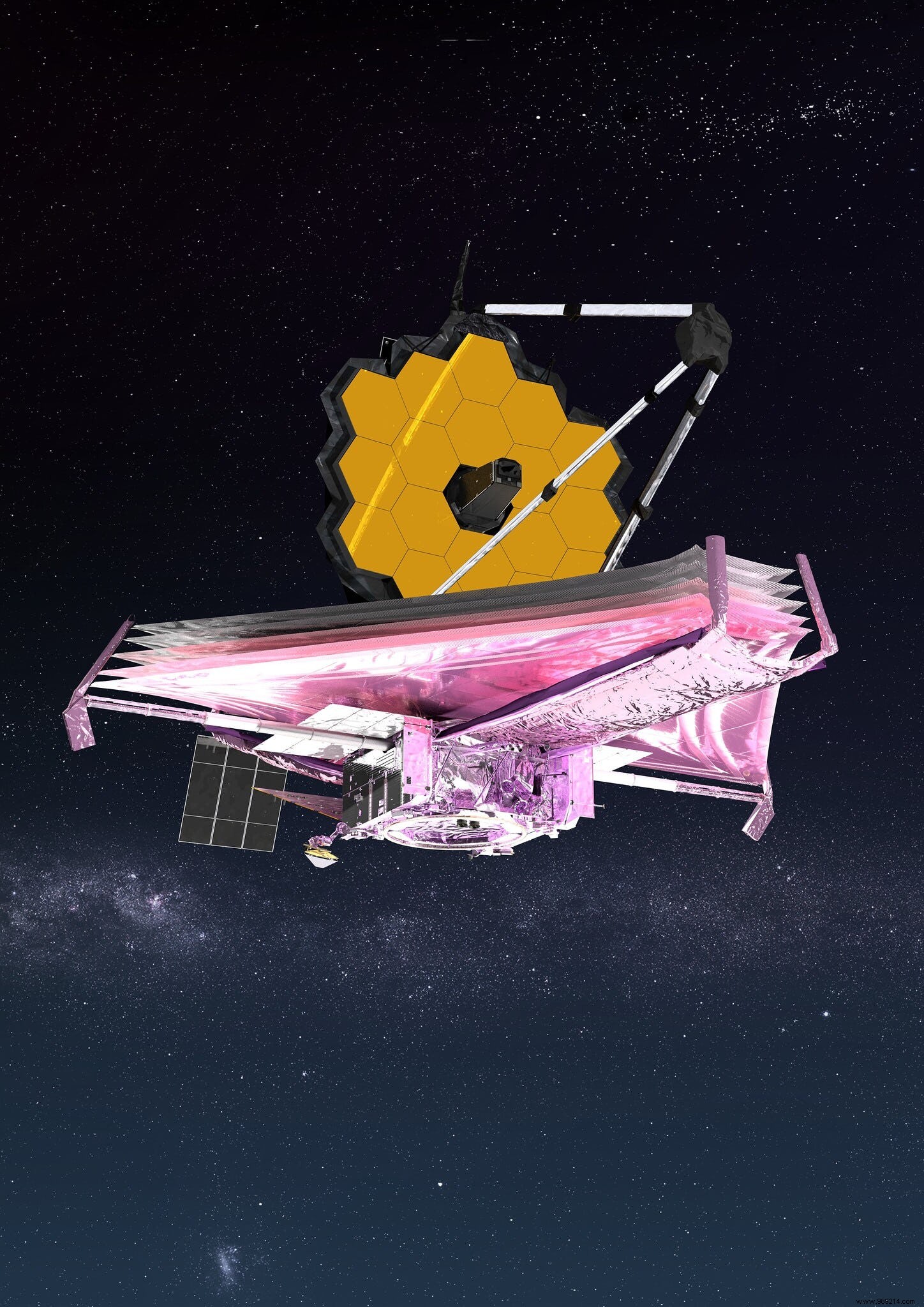The wings of the primary mirror are now extended, completing a beautiful golden petal 6.5m in diameter. The most critical processes are now closed, but other dangers still lurk at the James Webb Telescope. Space debris and other micrometeoroids weighing less than one gram are among them.
So far, everything is going as planned and even much better than expected. The sun visor and main mirror of the James Webb Telescope are indeed successfully deployed, while the flawless launch of the Ariane 5 rocket gives the researchers enough fuel margin to work for fifteen at twenty years against the five to ten years initially planned .
That said, the observatory is not out of the woods yet. As it circles the Sun in a chaotic orbit, it will encounter a lot of space junk along the way. According to the team, several impacts will probably be unavoidable .
"Some small micrometeorite impacts will occur "said Michelle Thaller, a scientist at NASA's Goddard Space Flight Center. "During the lifetime of the mission, the telescope mirrors will therefore be damaged “.
Despite everything, the team remains confident. And for good reason, the James Webb Telescope has a tough skin. The petals of its enormous mirror are in fact made up of eighteen hexagons of beryllium, a light but very strong metal. The telescope's sunshade is a five-layer sandwich made of Kapton to protect the telescope from the heat and glare of the Sun. If one of these layers were to tear, the other four could still "do the job “, assures the researcher. These risks were obviously taken into account when developing the JWT .

These precautions were necessary. Indeed, at more than 1.5 million km from the Earth, no rescue mission will be possible in order to occupy the telescope as was the case with Hubble, just 500 km above our heads, visited five times between 1993 and 2009 for repairs and upgrades .
On the other hand, it should be noted that Hubble operates in a much more crowded orbit in low Earth orbit. So inevitably, he takes more "blows". As Inverse points out, the telescope's mirrors are indeed pockmarked with tiny craters carved out by bits of debris hitting the telescope as it traverses its orbit. Fortunately, none of this damage has so far affected the telescope's ability to operate.